
Heavy road train on the go: the Schick Group’s Arocs
Story
Through the night on seven axles – Walter Kleinhenz pulls a 37.5-tonne concrete element to Frankfurt Airport with his Arocs 2653.
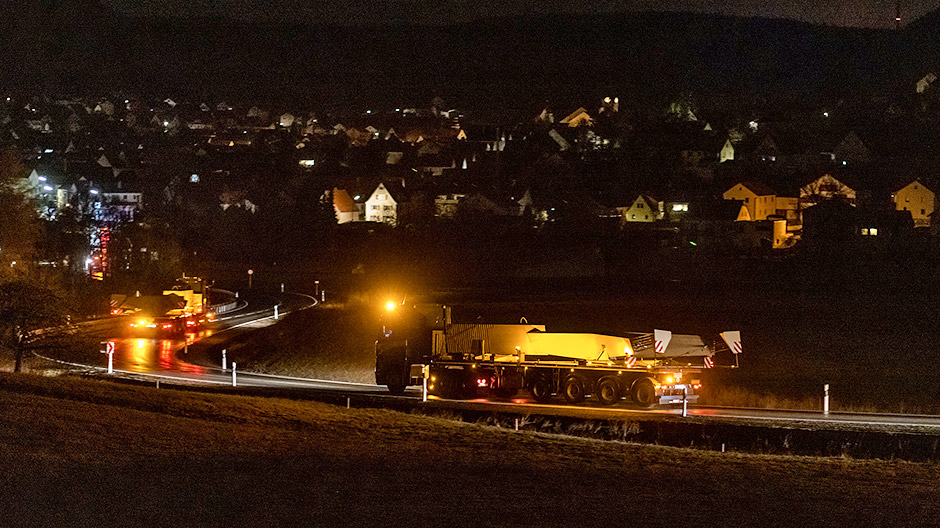
You would think that routine would set in at some point. Although the heavy transport drivers from the Schick Group in Bad Kissingen have 86 transports of this kind to deal with until the summer, somehow everything is different every time. Like now at 0.40 a.m. at the “Schwarze Pfütze” car park just before the slip road to the A 71 motorway, where everyone has to get out again and tighten the heavy chains securing the load. It’s March and the last week brought the year’s first warm days. Nevertheless, it’s so damn cold again now. Sleet pelts down against Walter Kleinhenz’s face.
The crew is in a rush. Up to now, everything has gone smoothly. But there are still 210 kilometres to go to Frankfurt Airport. The otherwise pitch-black section of road is illuminated in a soft orange colour by the vehicle’s lights. Here, the police car leaves the convoy that it had accompanied along the A- and B-roads.
“The weight of the load isn’t the problem. The Arocs can manage that easily. The challenge is the width.”
– Walter Kleinhenz, heavy-goods driver for the Schick Group
“We left on time, which is important,” says Walter, who has to keep an eye on his driving time. He knows the route. Today, however, the conditions are more difficult than usual: his Arocs is pulling a 37.5-tonne Y element, which was manufactured in the Anton Schick GmbH + Co. KG concrete plant. The component is an essential element of the new Terminal 3 at Frankfurt Airport. “The weight of the load isn’t the problem. The Arocs can manage that easily. The challenge is the width of 5.40 metres. It can be a tight squeeze,” says Walter.
“I’m very satisfied with the Arocs,” says Walter. “The space, the comfort, the power – it’s all just perfect.” Even though he caught some sleep earlier, the effort is now written all over his face. Securing the load, repeatedly going up into the cab and down again. It takes its toll over time. “We don’t just drive from A to B. The part we’re transporting weighs 37.5 tonnes, so we have a lot of work to do just securing the load again.
Walter looks at the MirrorCam display on the left A-pillar. “The system is a really big help for us. When I turn with the trailer, the image pans along with it. That means that I always have everything in view all the way to the rear.”
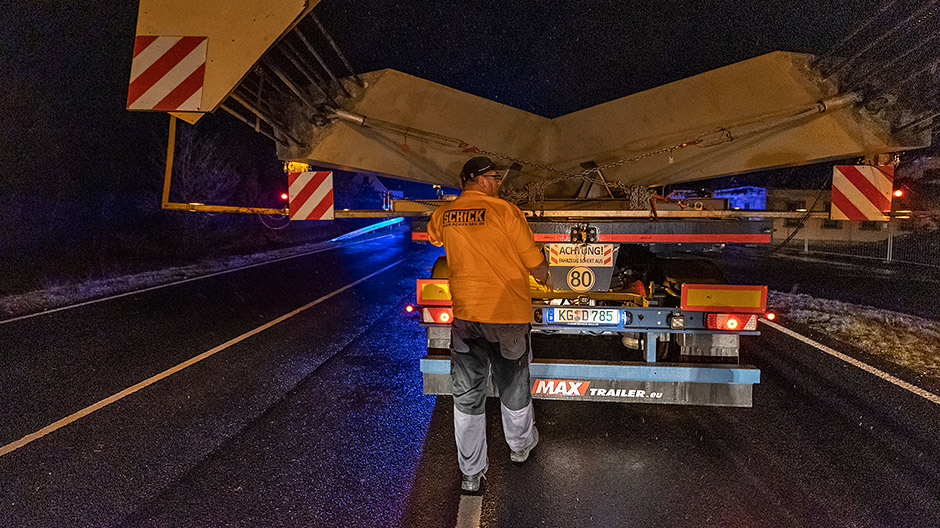
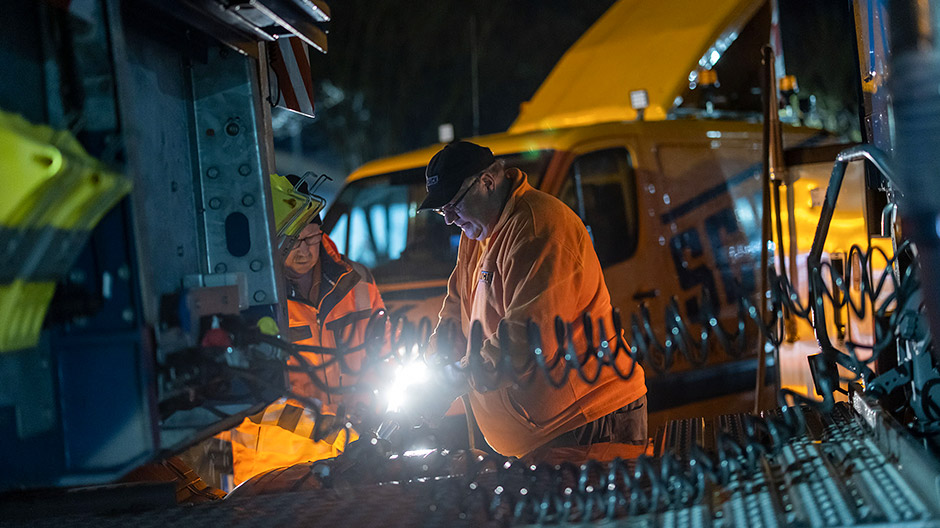
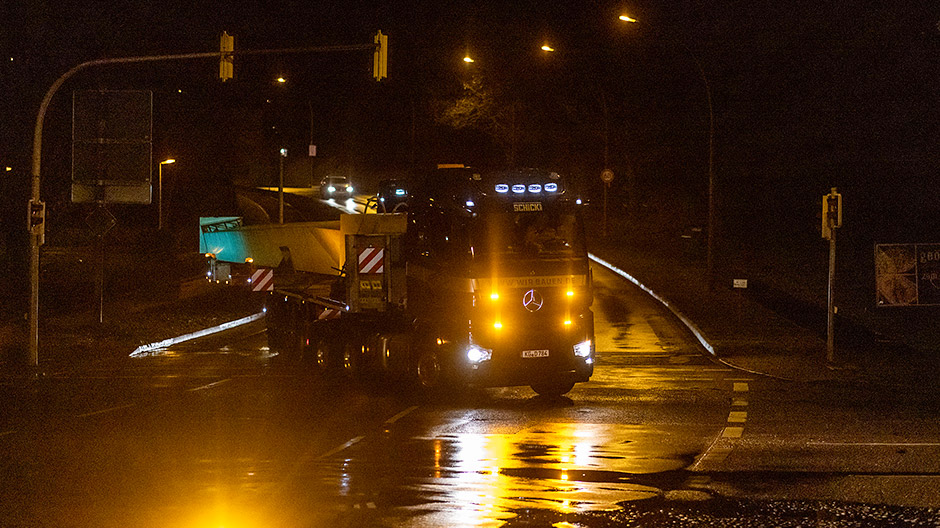
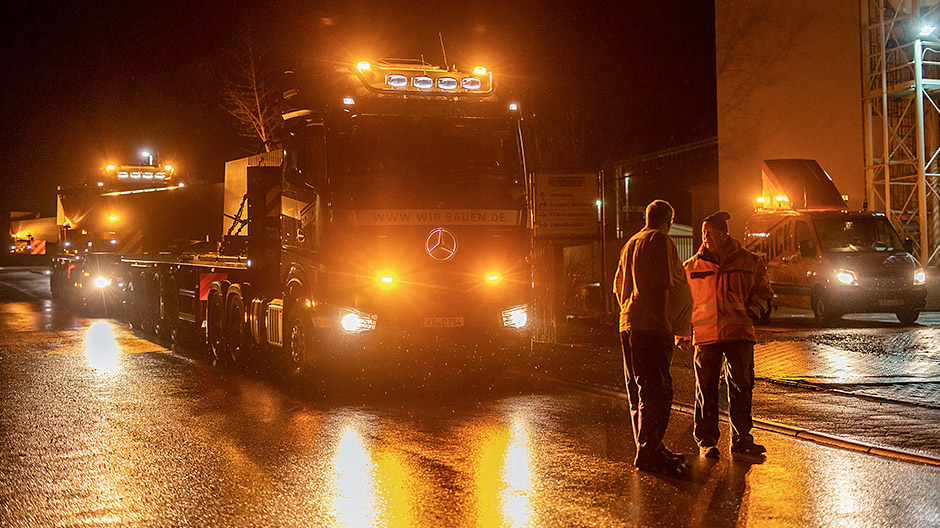
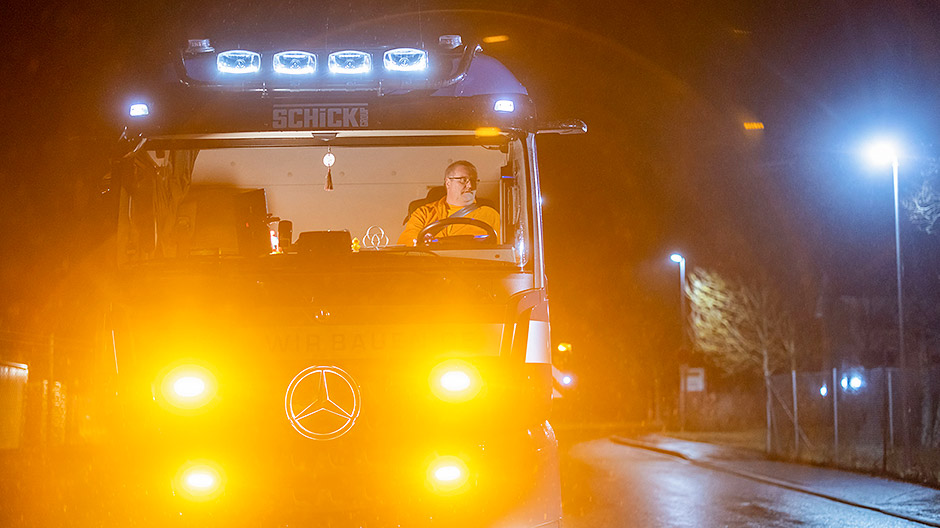
Being a driver is in his blood.
The procedures in these weeks are as follows: in the afternoon, a team from the Schick Group uses a gantry crane to load the Y supports onto the four-axle trailers. After being loaded, the two Arocs are then prepared for the drive in front of the factory. At 11 p.m., the drivers meet up. The load is secured again and final checks are done before departure. At midnight, the police arrives and the convoy sets off. It arrives at the airport at around 4 a.m. Then a break until the morning, when the cranes there start the unloading process. Then it’s back to Bad Kissingen and everything starts all over again.
Walter is now ready to set off. Before becoming a heavy-goods driver, he worked as “normal” driver for construction sites: “Driving a truck is part of me. Something I was born with. My dad was a truck driver all his life. I was already manoeuvring trucks at the depot when I was 13. When you then start transporting abnormally wide and long loads, it’s a real kick – a kick that keeps on giving. It’s so amazing.”
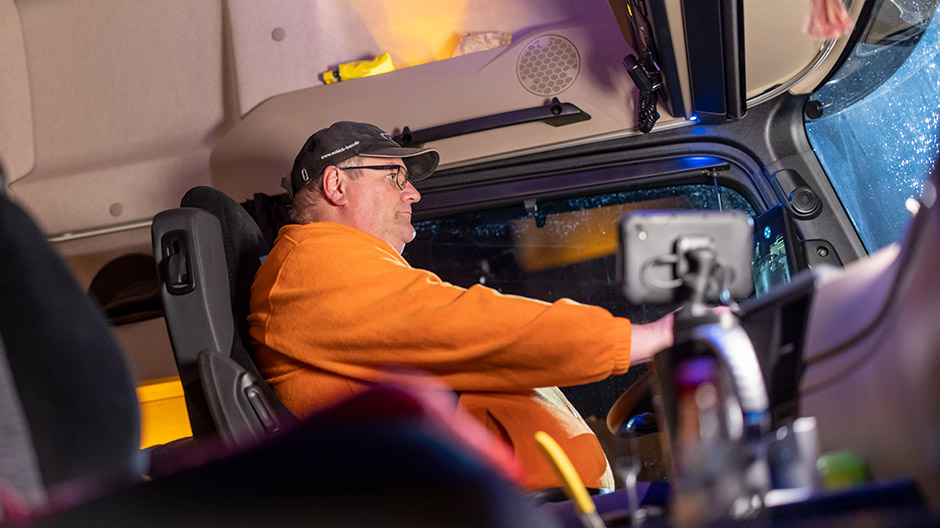
Walter Kleinhenz.
66.5-tonne road train.
A long incline now lies ahead of the convoy. The rear lights of the front escort vehicle get further away. Walter now notices the 66.5-tonne total weight of the road train. “I’ve got to accelerate here, so we can keep up.” His right foot pushes gently down on the accelerator. The 390 kW of the tractor unit effortlessly bring the Arocs back into position. The second Arocs in the convoy also catches up.
In the meantime, the convoy has exited the A 3 motorway onto the A 5 towards Basel. Ahead lies the most difficult section of the route, and today, with the heaviest type of Y elements in tow, it’s a really tight squeeze again on the construction site. Walter puts the radio into its holder. The Arocs slows down and swings into the single lane. Walter points at the MirrorCam displays. On the left and right, there are just 15 centimetres between the concrete walls and the vehicle. Absolute concentration is necessary until they depart. Cautiously, the convoy crawls its way forwards. It’s now 3.50 in the morning. Here, on the section of motorway east of the airport, traffic is usually heavy. But now it’s pretty quiet even here. Good for the crew. The vehicles now reach the entrance to the construction site. Success. Yet again.
This article contains additional material (videos, images and reports etc.) for registered RoadStars members. In order to experience the article to the full, you need to log in with your RoadStars account or register for one free of charge.
Become a RoadStar and gain access to exclusive content and campaigns!
Login for RoadStars members
Not yet a member? Join RoadStars now
Obtain exclusive access to exciting events and activities which only RoadStars can offer.
Join RoadStarsA bitterly cold wind blows across the airport. “There’s no getting
round it, we have to go out again, and remove the chains securing the
load and the lights. Then the prefabricated construction assembly team
can unload directly. At least that’s how it was yesterday.” So
everything is routine after all? Walter laughs, leading the team into
the construction site at walking speed. “No, there’s still no sign of
any routine.”
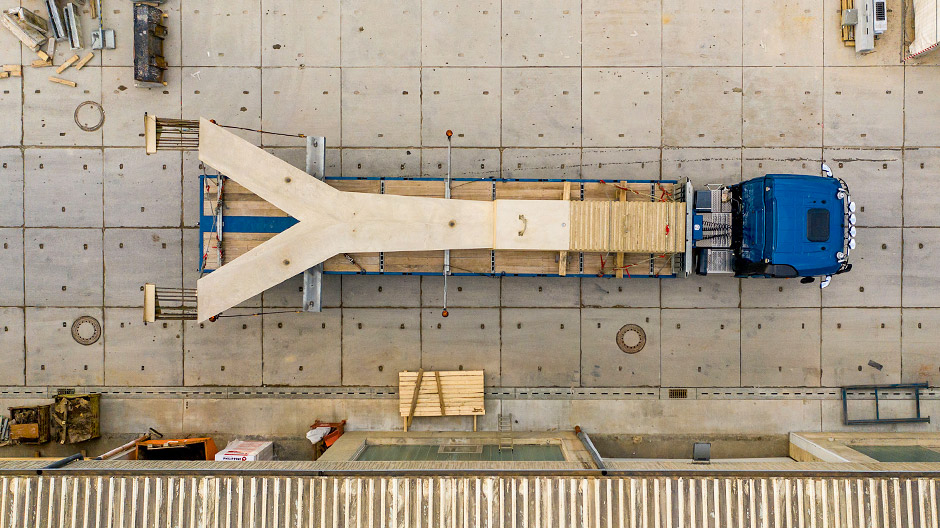
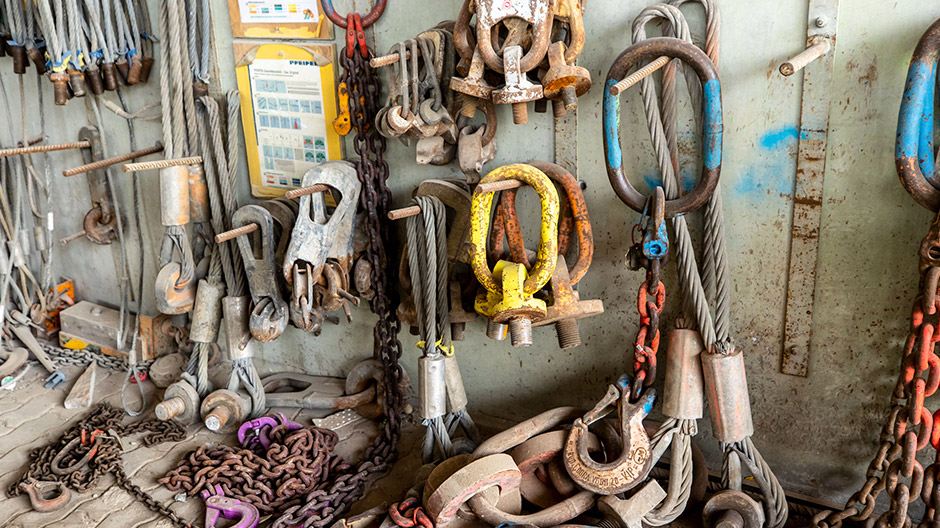
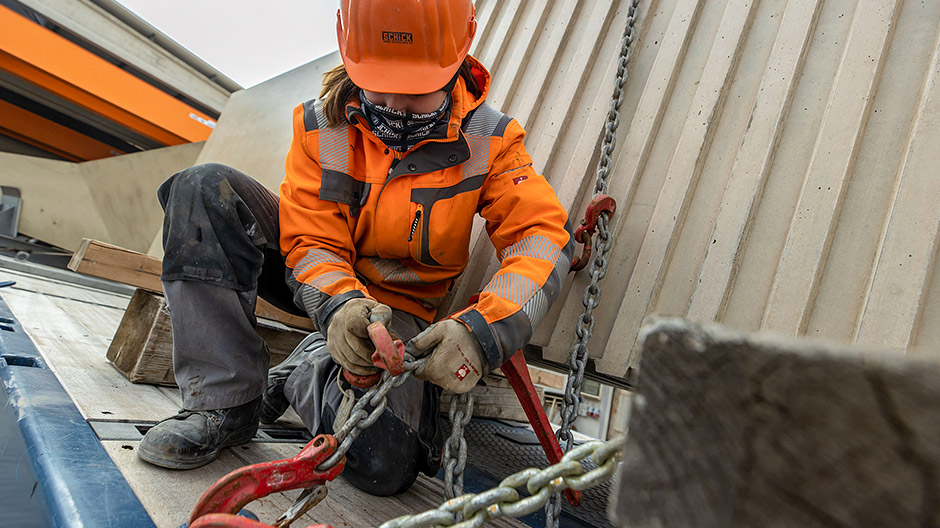
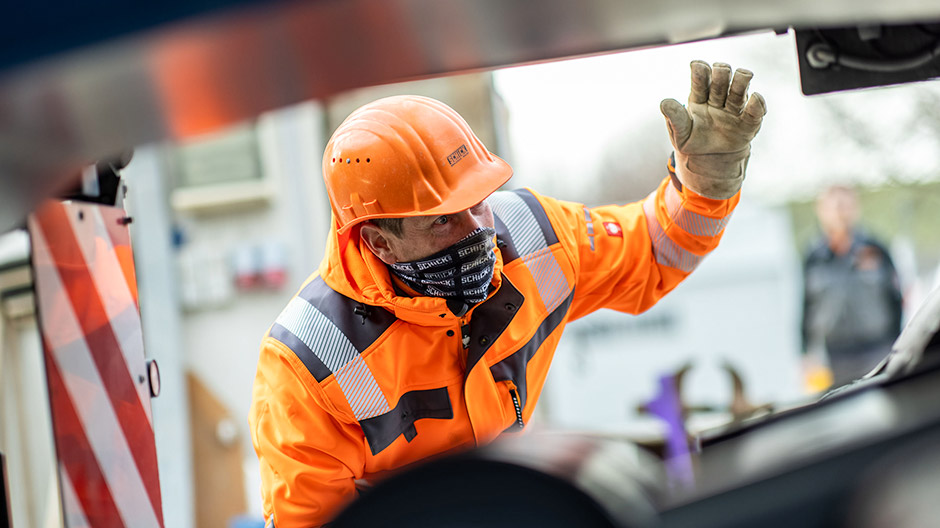
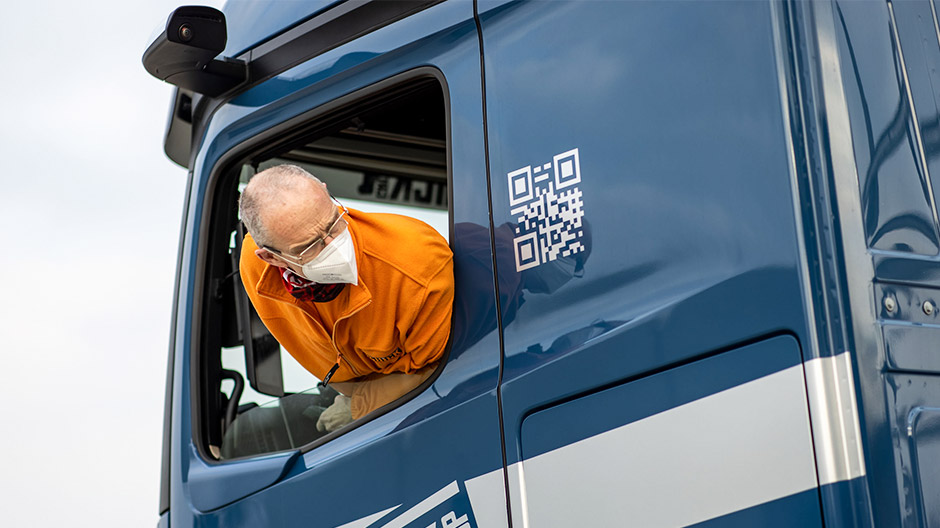
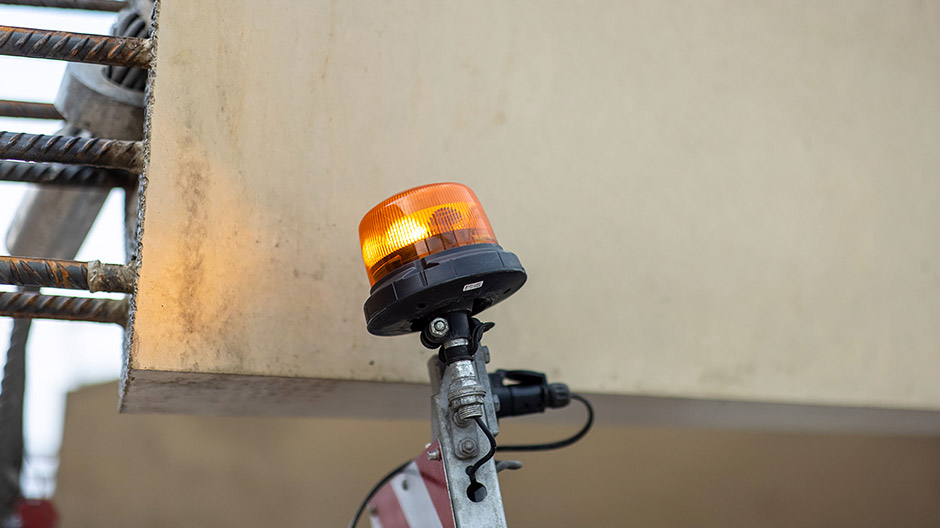
Photos: Alexander Kraus
Video: Martin Schneider-Lau




Comment
Please log in to post a comment.
13 comments
Super Arocs!!
Ich fahre selbst Baumaschinen Transporte mit einem Arocs
Super Arocs!!
Ich fahre selbst Baumaschinen Transporte mit einem Arocs
Ein toller Artikel und imposante Fotos!
Grüße Jörg 👍👍👍⛟😎😷
Ein toller Artikel und imposante Fotos!
Grüße Jörg 👍👍👍⛟😎😷